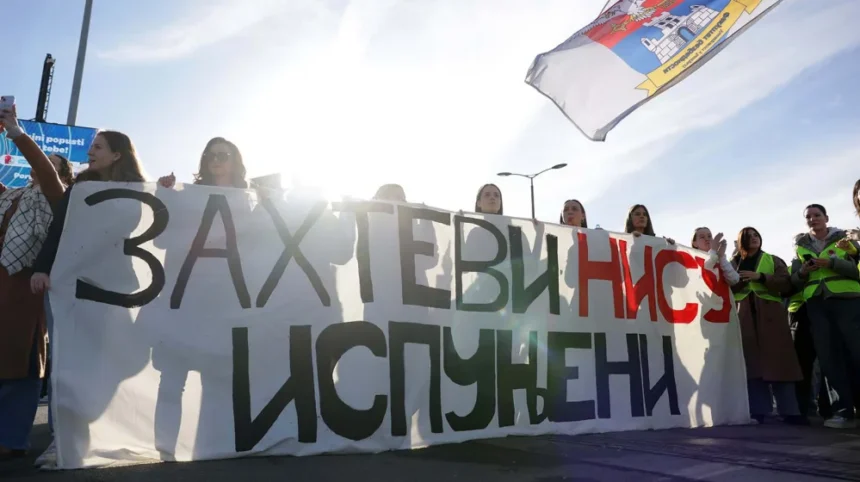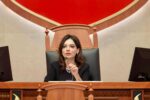Serbia faces mounting unrest as student-led protests are set to peak on Monday with a major demonstration under the slogan “Man, Get Angry.” Protesters plan to block one of Belgrade’s key traffic hubs, Autokomanda, for 24 hours, risking widespread chaos and heightened tensions. According to Slobodna Dalmacija, the situation could spiral into violence, as past protests have seen regime-affiliated actors use aggression against demonstrators.
President Aleksandar Vučić has urged police to protect lives during the protests but dismissed the planned blockade as “unnecessary torment for citizens.”
Protests Against the Regime
The demonstrations, now in their second month, were initially sparked by demands for accountability over a railway station collapse in Novi Sad that killed 15 people. However, the protests have since grown into a broader critique of Vučić’s authoritarian governance.
A general strike last week paralyzed much of Serbia, with teachers, doctors, farmers, and other professionals joining the cause. Protesters have used strategic public blockades, leaving police unable to maintain control.
Vučić’s Countermoves
In response, Vučić organized a pro-government rally in Jagodina, attracting 50,000 attendees, largely state employees coerced into participation. The event showcased the president’s declining support as citizens grow increasingly disillusioned with his administration.
The regime has also resorted to propaganda, with a video featuring Prime Minister Ana Brnabić portraying Vučić as a heroic figure reminiscent of Serbia’s historical warriors. Critics, however, see this as a desperate attempt to counteract public dissatisfaction.
Risk of Escalation
Observers fear that the regime’s inability to quell unrest could lead to mass violence. Speculations are rising about Vučić potentially declaring a state of emergency to suppress protests. Such a move would echo the tactics of former Serbian leader Slobodan Milošević, whose downfall followed similar unrest.
Should Vučić fall, questions remain about who could take the reins. Serbia’s fragmented opposition lacks cohesion and viable leadership, leading some to propose a transitional government to organize new elections within six months.
Serbia at a Crossroads
As public discontent intensifies, Vučić’s options narrow. A state of emergency might temporarily quell dissent but risks cementing his downfall. With parallels to Serbia’s turbulent history under Milošević, the country faces an uncertain future.







